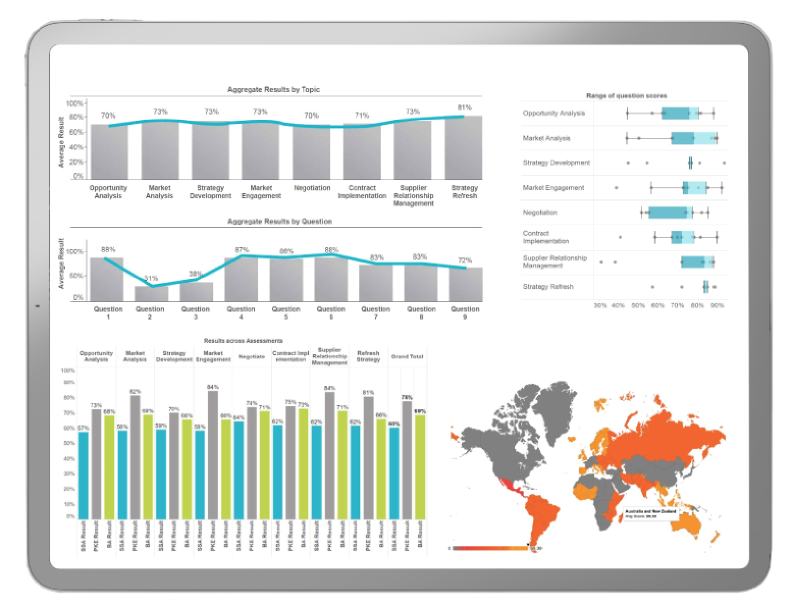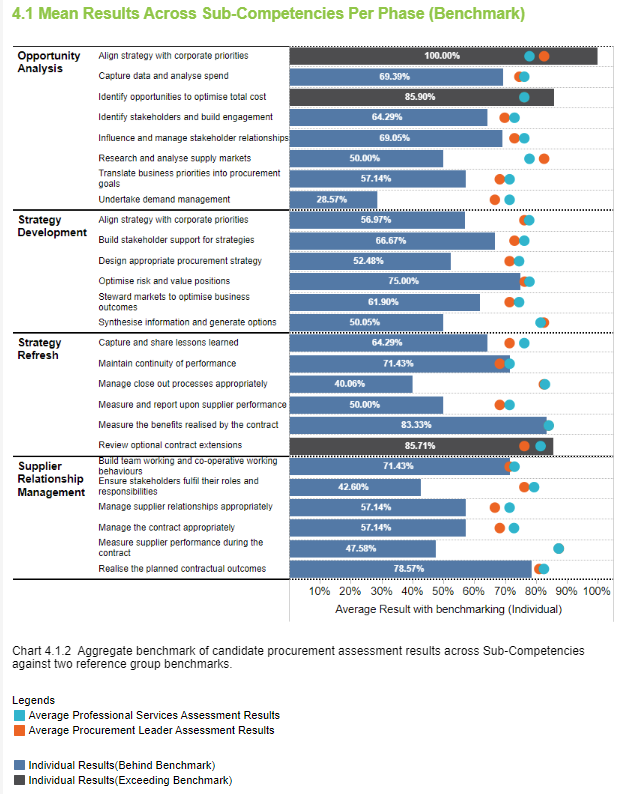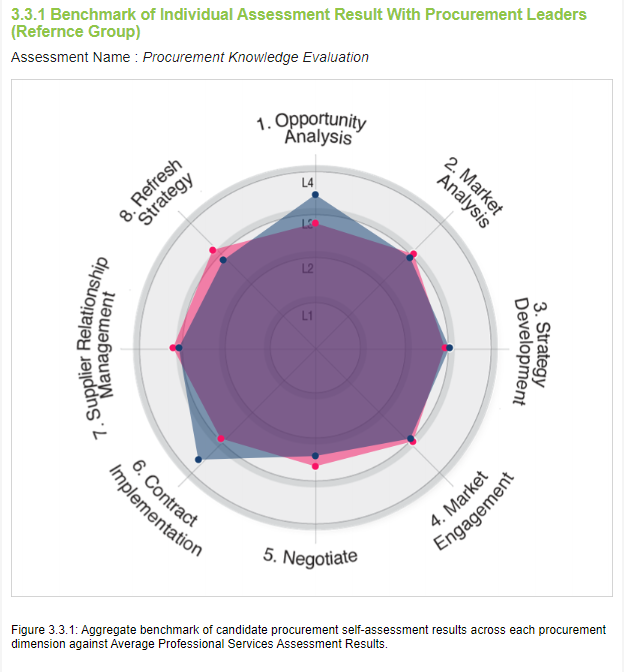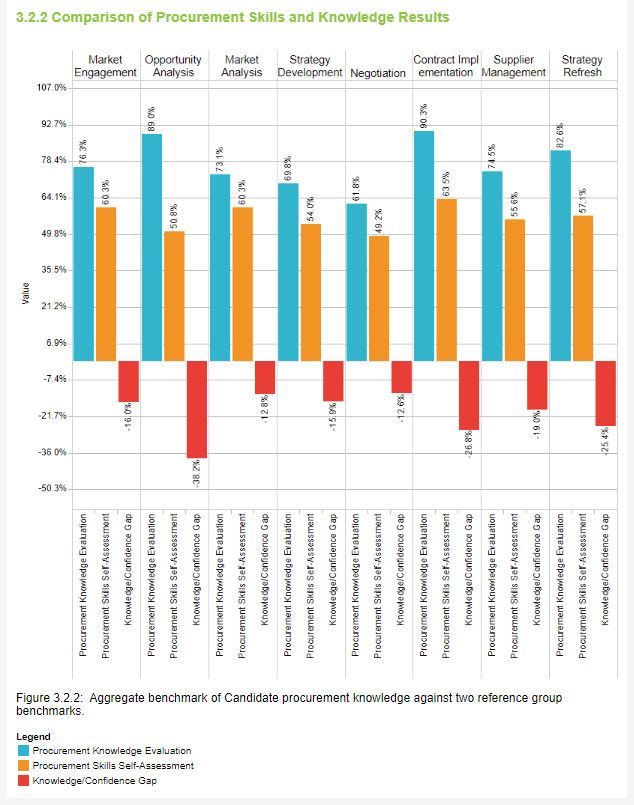How to do a Skills Gap Analysis
Lessons from 200,000 skills assessments
First things first: what is a Skill Gap Analysis?
A skills gap analysis is, quite simply, an assessment of your current capability level compared to the skill level required. This can be done on an individual, group or organisation-wide level. The skill level required might be in relation to a project in the pipeline, the broader responsibilities of a job position, or even the ability to live up to the values of an organisation.

Why should you believe us?
We know the web is full of blog posts from self-proclaimed experts, so why is this post any different? Well, Skills GAP Analysis is a global leader in Assessments with tools adopted by both public and private sector organisations with over 20,000 assessments completed across Australia, United Kingdom, South America, New Zealand, Middle East, and Asia. Simply put, when you’ve done as many skills gap analysis as we have, you know what you’re talking about!
Why do a Skills Gap Analysis?
The world is growing more complex. Stakeholder demands, innovation, risk, volatility and evolving technology all add to a multi-faceted workplace that is demanding more from those who work in it. It’s daunting, but also exciting.
In our industry of procurement and supply chain, there is much to be gained for organisations when it comes to their procurement performance. An IBM Chief Procurement Officer Study found that ‘procurement performance has a broad and direct impact on corporate performance’. But in order to take advantage of this, an organisation must have the appropriate capability in the positions where they’re needed.

Why not hire appropriately skilled staff? I hear you ask. Well, sometimes that is an appropriate course to take. But consider this: it’s predicted that by 2030, 10,000 ‘baby boomers’ will have reached the age of retirement and could trigger the biggest corporate ‘brain-drain’ to date. Ready-made employees will become thin on the ground, and organisations will be hell-bent on retaining them.
A skills gap analysis can uncover not only where you need to improve skills but you might uncover some hidden competency in places you weren’t expecting them. This graph below identifies not only where an employee needs skill improvement, but also where they exceed benchmark results.
Also, consider this from an employee’s point of view. Would you prefer to work for a company that wants their staff perfectly trained and skilled before they apply or a company that invests in the development of their employees and guides them to new heights? People will always want to work for the organisation that will leave them better skilled and more desirable than they were on their first day. It’s how you breed loyalty, and in this age of a thinning workforce, loyalty is king.
All right, so how do you do it?
First thing to consider: is this an analysis at the individual or team level? Or even organisation-wide? Once you’ve decided on this, determine the goals of the skills gap analysis. Is it simply an audit to find out where employees are at? Do you have an upcoming project you need to prepare for? Are you performing below par department-wide?
Our Skills Gap Analysis usually provides:
- Group level recommendations for improving management, policies, systems or resources to enhance overall team capability.
- Key development programs and training interventions recommendation to effectively support the business or organisation with maximum value delivered and return on investment.
- A roadmap representing a program to efficiently implement the recommendations made to reduce skills gaps. Roadmaps are aligned to internal resource availability and learning and development culture.
A Capability Framework is essential to determine the capabilities required to perform at the desired level in a given role.
To keep things in focus, always remember these key questions:
- What skills does the organisation value?
- What skills do the employees need to do their jobs today?
- What skills do the employees need to do their jobs tomorrow?
When evaluating procurement knowledge, we have established a framework of eight dimensions:
- Opportunity Analysis
- Market Analysis
- Strategy Development
- Market Engagement
- Negotiation
- Contract Implementation
- Supplier Relationship Management
- Strategy Refresh
Within each of these dimensions, we use a series of multiple-choice questions varying in difficulty.
But these dimensions will differ depending upon the function you are assessing. You’ll see below different dimensions we have developed for Contract Management and Supply Chain Management.
| Contract Management | Supply Chain |
|---|---|
|
|
Try Our Procurement Assessments
For Procurement Specialists, Strategic Sourcing
and Category Managers
Three factors need to be considered here. 1. The role of the employee, 2. their interest level and 3. their ability to develop further expertise in procurement. A one-size-fits-all approach isn’t really going to cut it. We tailor our assessments based on the role and level of the employee.
We also provide assessments separated by the function under analysis such as:
- Procurement
- Contract management
- Supply chain
- Commercial leadership
Contract Management Assessments
For those who work in Contract Management.
Now it’s time to find out the participants’ current skill level, a pivotal step that requires a deft touch. To reassure employees that you aren’t simply hunting the ‘weak links’ to eliminate them, but instead are intent on developing and improving where required, it is prudent to have a CEO or equivalent communicate to the participants that the company is committed to the skills gap analysis, and the program will be seen through to its end.
Also, you should highlight what’s in it for them. With our skills gap analysis employees will:
- Gain insight into their expertise in each step of the process.
- Benchmark their knowledge against the rest of the profession.
- Receive a personalised ‘Your Training Plan’ with a move away from the ‘sheep-dip’ approach.
- Receive an individualised report which they can use for your own personal development.
- Gain a feeling of contribution!
Supply Chain Assessments
For those who work in Supply Chain
There are several ways to determine current skill levels: assessments and surveys, employee interviews, and consulting performance reviews. Essentially, you’re analysing the current skills, knowledge and behaviours of your staff.
At Skills Gap Analysis, we use three main types of assessments
- Knowledge evaluation which is a timed assessment with multiple-choice questions in each of the 8 competency dimensions
- Skills self-assessment by participants against 8 dimensions
- Behavioural assessment based on past behaviour which can be a predictor of future success.
Learning more about our assessments at https://skillsgapanalysis.com/capability-assessments/.
Commercial Leadership Assessments
Leaders, from time-to-time it can be helpful to take stock.
Of course, the most important step is what you do with this information. Your capability framework has demonstrated the skills you need, and now you’ve identified the current skills of your staff.
A skills gap analysis has many benefits. You may find:
- Certain individuals are more suited to a role they don’t currently occupy
- People who can fill gaps in the pipeline you initially thought you had to hire new staff for
- Skill gaps where training is required.
If there is a skills gap, then a methodical, analytical skills gap analysis will uncover it. Appropriate graphical representation of data is important to understanding results. Here, for example, is a graph benchmarking an individual against average results in our database. You can very quickly see the strengths and weaknesses on this person against the benchmark.
Benchmark or Individual Assessment Result with Produrement Leaders (Reference Group) for Procurement Knowledge Evaluation
Aggregate benchmark of candidate procurement self-assessment results across each procurement dimension against Average Professional Services Assessment Results
Typically, with this our skills gap analysis we will:
- Review of participant capability by all assessments undertaken, together with observations & insights. Review of capability by each group undertaking the assessments, together with observations & insights.
- Undertake role-based assessment results with strengths, opportunities, and recommendations.
- Benchmark results against a like-for-like comparator group together with analysis.
- Recommended a change program at 0 – 30 days, 30 – 60 days, 60 – 90 days and so forth.
Of course, you want to know if your change actions are effective, so we also conduct year-on-year analysis of results to measure success.

It’s time to close the gap. This graph shows identified skill gaps in red. That’s the difference between knowledge evaluation and skills assessment. In this example we see the greatest skills gap in “Opportunity Analysis” followed by “Contract Implementation” and “Strategy Refresh”. We now know exactly where to focus our attention on this employee to close the skills gap.
Comparison of Procurement Skills and Knowledge Results

If you’re going to conduct this in-depth analysis generic or large group classes aren’t going to ‘cut it’. It is essential that you provide the correct learning modules for your team, tailored to each individual. Public courses are usually not structured to give this ‘fine-grain’ education.
Our recommendations are based on the 70:20:10 model. First published by Michael M. Lombardo and Robert W. Eichinger, from a study in their 1996 book The Career Architect Development Planner, the 70:20:10 concept centres around the idea that 70% of our learning comes from experience, 20% comes from watching our colleagues, and just 10% comes from formal learning. The percentages are not exact, what’s important is the magnitude.
A skills gap arises when there is a deficiency in any of the three modes of learning. For example, we might be asked to undertake negotiation we are not equipped to handle. I.e. we don’t have the formal training (10%), we might not have colleagues or mentors of sufficient skills whom we can observe (20%) and finally, while we are learning from doing, we have no mechanism by which to properly gauge if we are doing a good job (70%). If your capable need is your negotiation skills, but you are not given the opportunity to shadow a capable negotiator and you are not sponsored to attend training on that topic, you may get a poor outcome.
For your skills gap analysis to have a real and immediate impact your analysis needs to direct participants to the role and industry-appropriate training. We’ve found that gap e-learning at the back-end of our skills gap analysis to be the most effective tool to create a rapid impact on skill gaps.
So our skills gap analysis make direct recommendations to over 250 e-learning modules, covering procurement, contract management and supply chain, offered at the introduction, intermediate and advanced levels.
Skills gap analysis can be a complex and time-consuming exercise but in the current business environment most organisations what answers quickly and guaranteed results. As a DIY approach can be time consuming and risky, we can tailor a skills gap analysis for you or you can use one of our existing skills assessment packages.

